Envision Math 5th Grade Textbook Answer Key Topic 2.1 Mental Math
Review What You Know
Vocabulary
Choose the best term from the box.

Question 1.
Using the ___ you can add two numbers in any order.
Answer:
Question 2.
The ___ is the answer to a subtraction problem.
Answer:
Question 3.
When you can change the grouping of numbers when adding you are using the ___.
Answer:
Question 4.
The answer in an addition problem is called the ___.
Rounding
Round each number to the nearest hundred.
Question 5.
748
Answer:
Question 6.
293
Answer:
Question 7.
139
Answer:
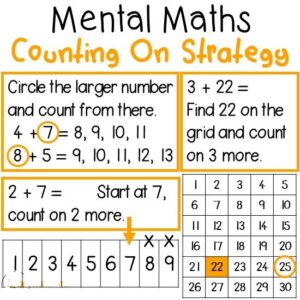
Round each number to the nearest thousand.
Question 8.
3,857
Answer:
Question 9.
2,587
Answer:
Question 10.
2,345
Answer:
Round each number to the underlined digit.
Question 11.
84.59
Answer:
Question 12.
2.948
Answer:
Question 13.
3.0125
Answer:
Estimating
Writing to Explain Write an answer for the question.
Question 14.
Explain how to use rounding when estimating
Mental Math
How can you use mental math to add and subtract?
Jon bought 3 items. Properties of addition can help him find the sum of the cost.

Another Example
How can you use compensation to add or subtract?
Sometimes you can change an addition or subtraction problem to make it simpler. With compensation you adjust one number to make computation easier and compensate by changing the other number.
Using compensation to add
Find 39 + 17 mentally.
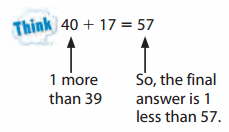
39 + 17 = 56
Using Compensation to subtract
Find 86 – 19 mentally.
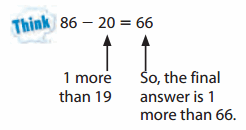
86 – 19 = 67
Explain It
Question 1.
In the first example above, why is the answer 1 less than 57? In the second example above, why is the answer 1 more than 66?
Question 2.
The equation 0 + 7 = 7 is an example of the Identity Property of Addition. What is the sum when you add zero to any number?
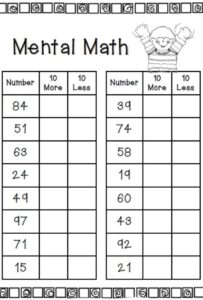
What you think
The Commutative and Associative Properties make it easy to add 17 + 9 + 3.
17 and 3 are compatible numbers. These are numbers that are easy to compute mentally.
17 + 3 = 20
20 + 9= 29
So, 17 + 9 + 3 = 29
The total cost is $ 29.
Why it works
Commutative Property: change the order
17 + (9 + 3) = 17 + (3 + 9)
Associative Property: change the grouping
17 + (3 + 9) + (17 + 3) + 9
Guided Practice*
Do you know HOW?
In 1 through 6, use mental math to add or subtract.
Question 1.
21 + 9 + 12
Answer:
Question 2.
35 + 46 + 4
Answer:
Question 3.
19 + 34
Answer:
Question 4.
38 + 15
Answer:
Question 5.
47 – 19
Answer:
Question 6.
86 – 49
Answer:
Do you understand?
Question 7.
Writing to Explain Which numbers are easier to subtract, 141 – 99 or 142 – 100? Explain.
Question 8.
Jim earns $22, $14, and $8 on three different days. How much did he earn in all? Use mental math to find the sum.
Independent Practice
In 9 through 26, use mental math to When you add 3 or more numbers, look add or subtract.
Question 9.
66 + 18 + 2
Answer:
Question 10.
97 + 3 + 64
Answer:
Question 11.
22 + 46 + 4
Answer:
Question 12.
237 + 195 + 5
Answer:
Question 13.
39 + 23 + 1
Answer:
Question 14.
57 + 42 + 3
Answer:
Question 15.
96 + 73 + 4
Answer:
Question 16.
299 34 + 1 + 6
Answer:
Question 17.
306 + 199
Answer:
Question 18.
453 – 98
Answer:
Question 19.
49 + 87
Answer:
Question 20.
68 – 29
Answer:
Question 21.
1,003 + 58
Answer:
Question 22.
468 190
Answer:
Question 23.
379 + 621
Answer:
Question 24.
230 + 215 + 70
Answer:
Question 25.
201 – 99
Answer:
Question 26.
101 + 17 + 99
Answer:
Problem Solving
Question 27.
Writing to Explain Use the Equal Additions Property shown at the right to find each difference mentally. Explain how you found each difference.
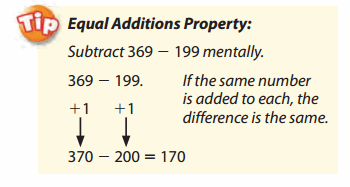
a. 67 – 29
b. 456 – 198
Answer:
Question 28.
The table at the right shows points scored by one team during a football game. Use mental math to find how many points the football team had scored after the first three quarters.
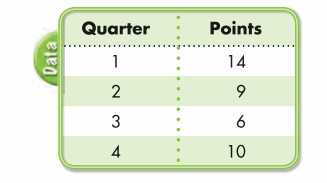
Answer:
Question 29.
On three different days at her job, Sue earned $27, $33, and $49. She needs to earn $100 to buy a desk for her computer. The cost of the desk includes tax. If she buys the desk, how much money will she have left over?
Answer:
Question 30.
A CD shelf can hold 50 CDs. Jill has 27 CDs. She plans to buy 5 new ones. Each CD costs $9. After she buys the new ones, how many more CDs will the shelf hold?
Answer:
Question 31.
Three different gymnasts had scores of 8.903, 8.827, and 8.844. Order the scores from greatest to least.
A. 8.827, 8.844, 8.903
B. 8.844, 8.903, 8.827
C. 8.903, 8.844, 8.827
D. 8.827, 8.903, 8.844
Answer:
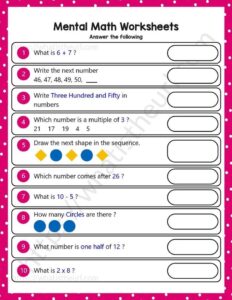
Question 32.
Which shows the Associative Property of Addition?
A. 3 + 10 = 10 + 3
B. 10 + 0 = 10
C. (3 + 10) + 7 = 3 + (10 + 7)
D. (3 + 10) + 7 = (10 + 3) + 7
Answer:
Question 33.
Andre buys 12 apples at $1 each. He uses a coupon for $1.50 off the total purchase. How much did Andre spend on apples?
A. $10.50
B. $11.00
C. $11.50
D. $12.00
Answer:
Question 34.
Which number, when rounded to the nearest ten thousand, is 70,000?
A. 6,499
B. 7,499
C. 64,985
D. 74,999
Answer:
Mixed Problem Solving
Question 1.
How much farther is Venus from the Sun than Mercury?

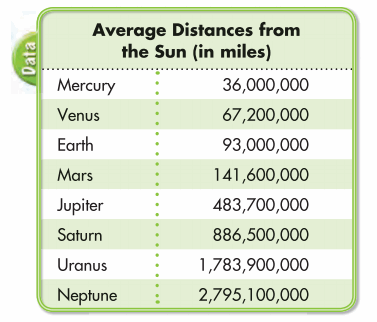
Answer:
Question 2.
Is the distance from the Sun to Jupiter greater than or less than the sum of the distances from the Sun to the inner four planets?
Answer:
Question 3.
Which planet has a distance that is closest to 1 billion miles?
Answer:
Question 4.
Neptune is the farthest planet from the Sun. How much farther from the Sun is Neptune than Earth?
Answer:
Question 5.
The diagram below shows about how much of Earth’s surface is covered by water. About how much of Earth’s surface is NOT covered by water?
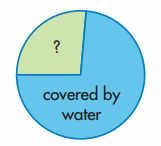
Answer:
Question 6.
A single drop of water doesn’t seem like much, but many drips of water from one faucet can quickly add up to several gallons per day. If the number of drips from a faucet is 30 per minute, how many drips is this for 10 minutes? Use repeated addition.
Answer:
Question 7.
Strategy Focus Solve using the strategy, Look for a Pattern.
Jack has fish as pets. Every time he buys some new fish, he buys a larger tank to fit them. Jack needs a 1-gallon tank for 3 fish, 2-gallon-tank for 6 fish, and a 3-gallon tank for 9 fish. If the pattern continues, how large of a tank will he need for 27 fish?
Answer:
